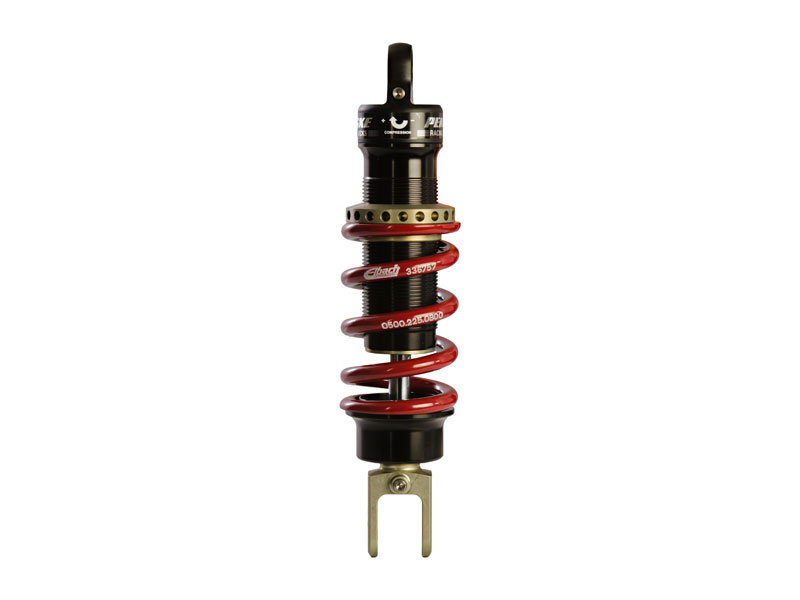Are Your Double Adjustable Shocks Really "Double Adjustable"?

September 20, 2021

No matter your bike or car, races are won when every detail is optimized to meet your driving or riding style, needs, and ultimately, give you an edge over your competition.
Adjusting your suspension over a season both in practice and on race days is often paramount to your success. Pair your superior driving with a car that handles well, and you’re on to a winner.
How can you adjust your suspension?
The two primary adjustments you can make on a shock are compression damping and rebound damping. To optimize your suspension most effectively, you want to adjust both of those settings independently, which is what the double-adjustable shock design allows you to do.
While a single-adjustable shock does allow you to modify both compression and rebound damping, when you adjust, you either increase or decrease both, in concert with one another. It’s essential to be aware of this before you decide on single or double adjustable shocks, as it depends on how much control you want to have.
Do You Need Double Adjustable Shocks?
Double-adjustable shocks can give your racing an edge, but there may be other enhancements you should address first.
If you’re considering double-adjustable shocks, you’re likely at the level where you’re racing every week, and making adjustments to your setup is the norm.
The double-adjustable design is an advancement in shock design over single-adjustable shocks. Further, both single AND double-adjustable shock designs are superior to non-adjustable shock designs.
We’ll show you why the double-adjustable design is better for your racing performance.
Why Would You Adjust Your Shocks
When looking to get the most out of your car or bike, you’re going to tweak everything there is to tweak. No stone is left unturned, from tire pressure to brake bias, from ride height to the vehicles’ components. But focusing on the finer details like suspension, particularly your shocks, can be a deciding factor in your quest to win. You need to get the best out of what you have.
Non-adjustable shocks off the shelf will most likely have the wrong damping for your car, so you must make changes and find your best setup. However, if you have a stock car or bike and buy the shocks for that application, you’d be OK. But most racers aren’t driving stock cars or bikes.
Check out our ON-DEMAND WEBINAR: Top 10 Most Common Suspension Issues & How to Resolve Them
The Basics Of Adjusting Shocks
Shocks have a primary job: to control the speed at which your wheels move up and down and control how the chassis moves in relation to the wheels. They perform this job by stopping your springs from compressing and rebounding too quickly. You can adjust the damping force of your shock when it tries to compress and when it rebounds. Controlling these variables allows for a better driving experience.
Compression
You can think of compression in two ways. Low-speed compression works when there are smooth loads on the suspension, such as braking, turning, and accelerating, and you can adjust the resistance to those movements and loads.
High-speed compression works when you hit a bump or a rock, and your shock compresses quickly. You can adjust the resistance to those bumps or rocks by making your shocks stiffer or smoother.
Rebound
Consider rebound a counteractive measure to compression. When your shock compresses, you can control the speed at which it rebounds. In low-speed scenarios, after you brake, does the car come up slowly or quickly? And after high-speed compression, how fast do your shocks rebound after hitting a rock or going over a bump?
Both compression and rebound affect how your car handles in the above scenarios, giving you ultimate control of your vehicle.
Check out our FREE DOWNLOAD: Shock Build and Shock Setup/Lap Time Worksheet
Our Setup/Lap Time Sheet is a great tool to help improve your communication and record keeping of your chassis setup.
Single-Adjustable Shocks
Single-adjustable shocks are pretty straightforward. There will be a knob on the shock, usually found at the bottom, and when you turn it, you either increase or decrease both compression and rebound. Make sure you record a lap before you adjust the settings, and then get out on the track to see if there’s an improvement.
Remember, when you adjust the shock, you adjust compression and rebound together, meaning the shock will be loose or stiff both ways. Single adjustable shocks work fine for vehicles not competing at performance level because drivers won’t take full advantage of the adjustment range on a double-adjustable shock.
They are still adjustable, meaning if you’re a casual racer, you can adjust as much as you need and quickly return to street settings.
Double-Adjustable Shocks
Because both types of damping can be adjusted separately, the range of adjustments is exponentially greater with double-adjustable shocks. With more options for stiffness and softness independently, the handling of your car or bike improves, meaning quicker lap times and a more controlled ride.
It will take more time to adjust your settings as there are two knobs to adjust. Also, consider that most drivers find a sweet spot with compression pretty quickly, but the proper rebound setting might take a bit longer to dial in as every driver is different and has preferences when handling their car or bike.
Why are Double-Adjustable Shocks Better for Racing?
Stock suspension is supposed to balance a comfortable ride on any track or terrain while still allowing for control when braking or navigating corners. Racers need more than that, and more options for stiffness and softness allow for incremental adjustments to suit your needs and style.
Compression and rebound need different levels of damping. When you ride over a bump, and the suspension compresses, it only has to contend with the unsprung weight of the wheels, brake discs, etc. But when rebounding, your suspension has to tame the spring’s forces extending and manage the sprung weight. Having this control levels up your performance.
Also, different tracks and road surfaces require different levels of compression and rebound damping. While you want to copy a setup for similar tracks, you also need the ability to make changes when necessary. Other tracks might have different elevation changes and tighter turns. With more settings on a double-adjustable shock, you have more options at your fingertips, meaning you can fine-tune for the best handling vehicle.
Lastly, to optimize your vehicle, you’ll change tires regularly, you’ll lower the vehicle height, you might invest in better brakes, and make other changes that fit your driving style, all of which means you’ll need adjustable shocks.
Learn more about Race Suspension Tuning Basics, 7 Things You Need to Know
Double-Adjustable Shocks are an Investment Worth Making
Double-adjustable shocks allow you to dial in your suspension and have the most control over the way your car handles. Ultimately you’ll need to get out on the track and make adjustments incrementally for the best result, which double-adjustable shocks work perfectly for. If you want faster lap times, you’ll need to control all variables, including your shocks.
To find the right shock for you, connect with one of our shock experts to begin the performance optimization process before buying anything. Our unrivaled customization and service will ensure you optimize your setup.


%20(1).png?width=1080&height=1080&name=Heritage%20Cruiser%20Shock%20-%20IG%20(1)%20(1).png)